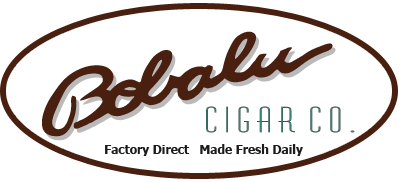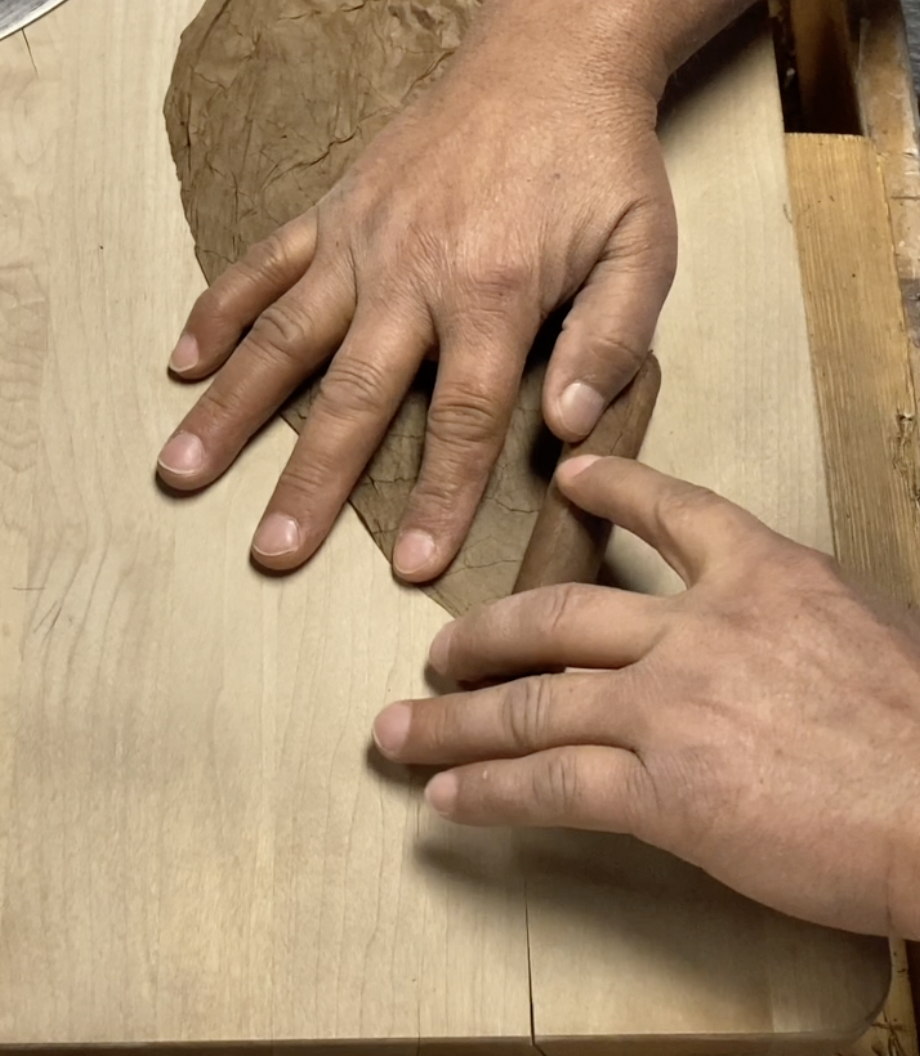3 Steps to Handroll a Cigar
Sample a Texas Select (seen here) for FREE today:
freecigar.net/free-cigar-tt (must be 21+, resident of U.S.)
HOW TO ROLL TUTORIAL (PART 1)
To begin, the torcedor inspects the tobacco leaf for any imperfections or irregularities. The torcedor then uses a small, flat tool called a chaveta to gently scrape away any bumps or ridges on the surface of the leaf. This process is known as smoothing out the tobacco leaf and ensures that the final wrapper will be even and smooth.Next, the torcedor carefully stretches the leaf, gently pulling it in different directions to loosen the fibers and make it more pliable. This stretching process is crucial for ensuring that the leaf will roll smoothly and evenly when it is used as a wrapper.After the leaf has been smoothed out and stretched, the torcedor selects the lighter side of the leaf to use as the wrapper. This side of the leaf typically has fewer veins and is smoother, making it easier to roll the cigar mold and create a more uniform appearance. The torcedor then uses the chaveta to carefully slice away the thick central stem of the leaf, known as the vein.This process is called desvenado, and it ensures that the finished cigar will burn evenly. Finally, the torcedor makes a series of shallow cuts along the length of the leaf, using the chaveta to create a pattern of thin strips. This process, known as capoteo, helps to ensure that the leaf will roll smoothly and evenly when it is used as a wrapper.Once these steps are complete, the leaf is ready to be used as a wrapper for a premium handmade cigar. The lighter side of the leaf is typically chosen for the wrapper to create a more consistent appearance and texture. Additionally, the lighter side tends to be more pliable and easier to work with, making it ideal for rolling the cigar mold.
LEARN MORE ABOUT OUR CIGAR ROLLING CLASSES
HOW TO ROLL TUTORIAL (PART 2)
To begin rolling a cigar, the torcedor tucks the tobacco leaf under the cigar mold. As he rolls, the torcedor carefully stretches the tobacco leaf to make it more pliable and easier to work with. This stretching process requires a delicate touch, as too much pressure can tear the leaf or cause it to become uneven. By stretching the leaf, the torcedor is able to ensure that the cigar will have a smooth, even texture when it is finished.To hold the tobacco leaf in place as he rolls, the torcedor uses a vegetable-based glue made from natural ingredients such as gum arabic. This glue is preferred over synthetic adhesives, as it is less likely to affect the flavor or aroma of the tobacco. The torcedor applies a small amount of glue to the edge of the leaf, then rolls the cigar mold around it to create the desired shape and size.As the torcedor rolls the cigar, he carefully removes any veins from the tobacco leaf. These veins contain a bitter taste and can affect the burn of the cigar, so it is important to remove them as the cigar is being rolled. The torcedor uses a small, sharp tool called a chaveta to carefully slice away the veins from the leaf, taking care not to damage the delicate wrapper.At the tip of the cigar, the torcedor rolls a pigtail by twisting the end of the wrapper leaf into a tight spiral. This pigtail serves as a decorative element and also makes it easier to cut the cigar later on. Before applying the final caps to the cigar, the torcedor makes a cut at the pigtail.
TRY A FREE HANDROLLED TEXAS SELECT, SHIPPED DIRECT TO YOU
HOW TO ROLL TUTORIAL (PART 3)
Adding a Cuban-style cap to a cigar involves a skilled process known as “flagging” or “mounting” the cigar. The cigar roller takes a small piece of wrapper leaf and carefully folds it over the head of the cigar, using a chaveta (a special cigar knife) to cut it to the desired size and shape. The cap serves as a protective layer over the head of the cigar and also enhances the smoking experience by concentrating the flavors.When making chaveta cuts for the cap, the cigar roller avoids cutting through the veins of the tobacco leaf. This is because the veins are thicker and tougher than the rest of the leaf, and cutting through them could cause the wrapper leaf to unravel. By avoiding the veins, the cigar roller ensures that the cap will adhere to the head of the cigar securely.After adding the cap, the torcedor (cigar roller) will add a second cap, known as the “flag” or “bandera,” to ensure that the wrapper leaf does not unravel during shipping or storage. The torcedor cuts the flag in the shape of a smile, which is then folded over the head of the cigar and secured with vegetable gum. The second cut is then made in the shape of a circle, creating a small opening at the head of the cigar for easy lighting.Finally, the torcedor inspects the cigar to make sure it meets the high quality standards expected of a premium cigar. They will check the draw, the appearance of the wrapper leaf, and the aroma of the tobacco to ensure that the cigar is properly rolled and will provide a satisfying smoking experience. Only after passing this inspection will the cigar be deemed ready for packaging and sale.
Sign-up for our in-depth cigar rolling course in Austin, Texas
Bobalu.com
Bobalu Cigar Company offers high-quality, hand-rolled cigars made from the finest tobacco in Central and South America. We have a wide variety of blends and sizes to suit different tastes and preferences. Customers can watch as their cigars are being rolled in the shop located at 8501 Burnet in North Austin, Texas or on livecigarrollers.com. You can even hire a Bobalu Cigar Company cigar roller for your next wedding- or just hire us to make custom cigars (including the bands) for your wedding or business event.Visit our website at Bobalu.com,give us a call at (512) 469-5877,or email jeff@bobalu.com.#cigarroller #atx #austintx #cigars #bobalu #handrolledcigar #cigarshop #cigarfactory #cubancigar #cigarrolling #handrollingcigar #cubanstylecigar #texascigar #madeintexas

